- Home
- Blogs
- FabCouture
- Kalamkari Prints: Unveiling the Rich Tapestry of Indian Craftsmanship
- Kalamkari Pr...
Kalamkari Prints: Unveiling the Rich Tapestry of Indian Craftsmanship
- By FabCouture
- • May 16, 2023
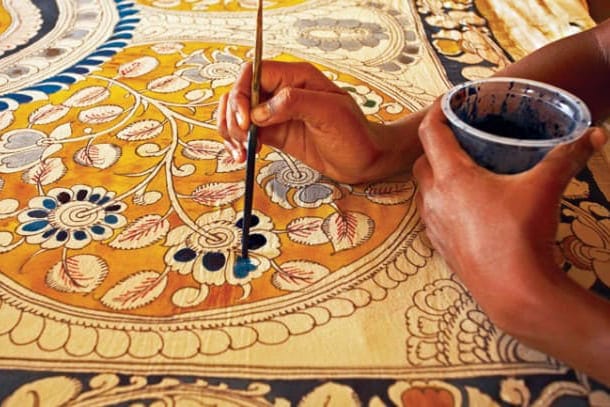
Introduction
Kalamkari prints are a testament to the rich heritage and craftsmanship of India. With their intricate designs, vibrant colors, and cultural significance, these prints have captivated art enthusiasts and fashion lovers worldwide. In this article, we will explore the origins, creation process, types, aesthetic significance, contemporary applications, and care tips for Kalamkari print fabrics. Whether you're a connoisseur of art or someone looking to embrace the beauty of Indian textiles, this article will provide valuable insights into the world of Kalamkari prints.
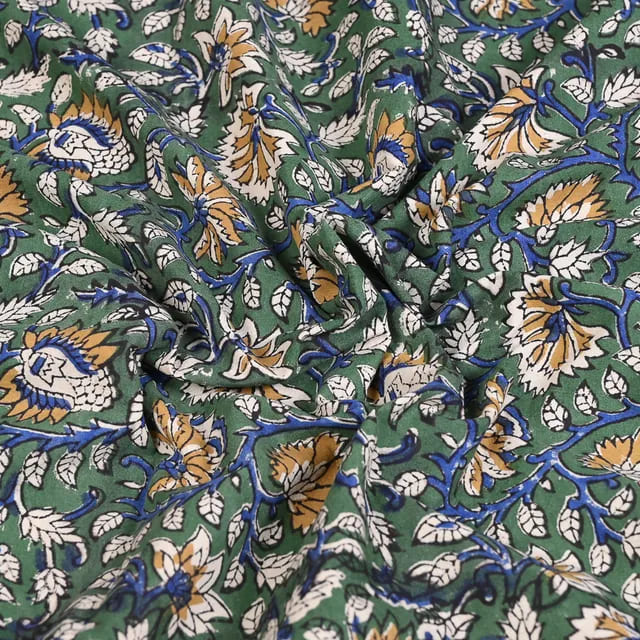
1. The Origins of Kalamkari Prints
1.1 Ancient Roots
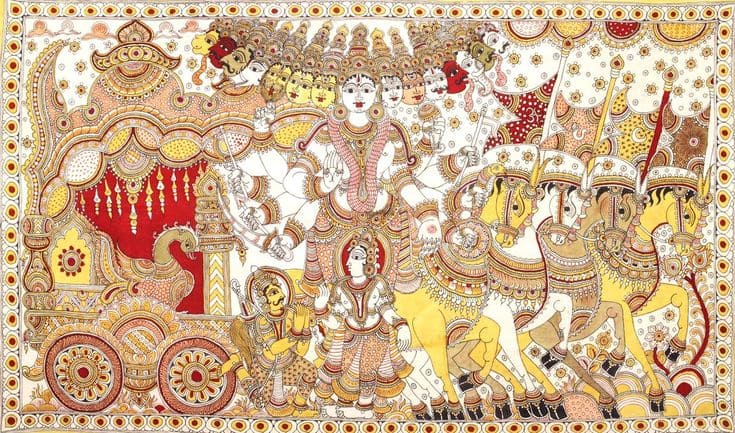
Kalamkari, which translates to "pen work," has its origins in ancient India. The Andhra Pradesh and Telangana regions of South India are where the art form originated, with a history spanning more than 3,000 years. The intricate motifs and patterns of Kalamkari prints were initially inspired by religious narratives and folklore.
1.2 Influence of Mughal Era
During the Mughal era, Kalamkari prints gained prominence as they caught the attention of the royal courts. The Persian influence on Indian art resulted in a fusion of styles, incorporating elements of Islamic aesthetics into the traditional Indian motifs.
1.3 Revival and Modern Adaptations
After a period of decline, Kalamkari prints experienced a revival in the 20th century. Artisans and designers recognized their artistic value and started incorporating them into contemporary fashion and home décor. Today, Kalamkari prints are celebrated for their timeless appeal and continue to be reinvented by modern artists.
2. The Process of Creating Kalamkari Prints
2.1 The Art of Block Printing
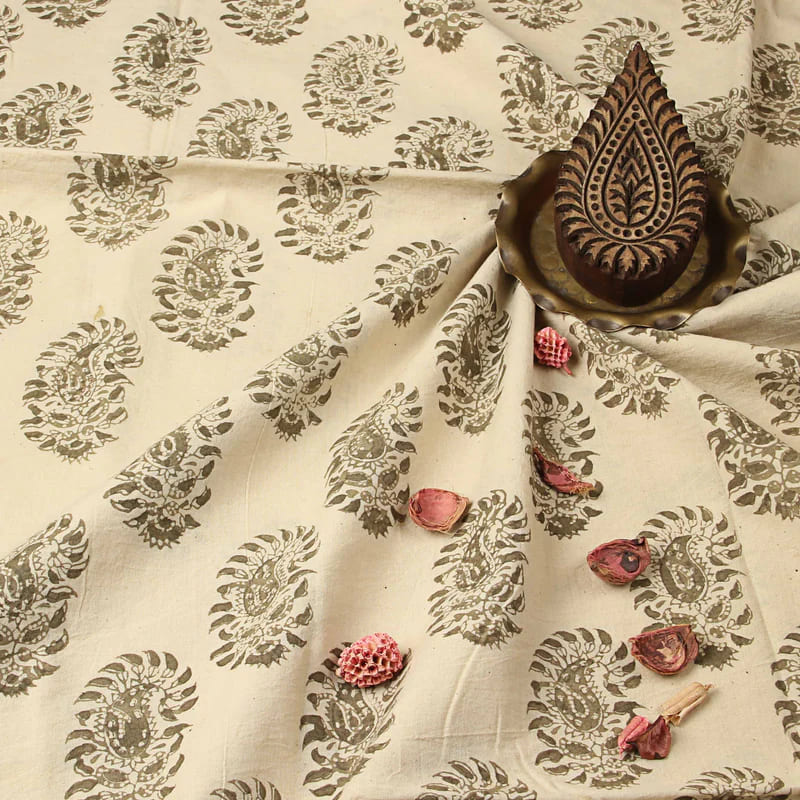
One of the traditional methods used to create Kalamkari prints is block printing. Wooden blocks are intricately carved, with a different block produced for each colour in the design by skilled artisans. These blocks are then dipped in natural dyes and carefully stamped onto the fabric, layer by layer, to build up the final pattern. The precision and expertise of the artisans result in beautifully detailed and harmonious compositions.
2.2 Hand-Painted Kalamkari
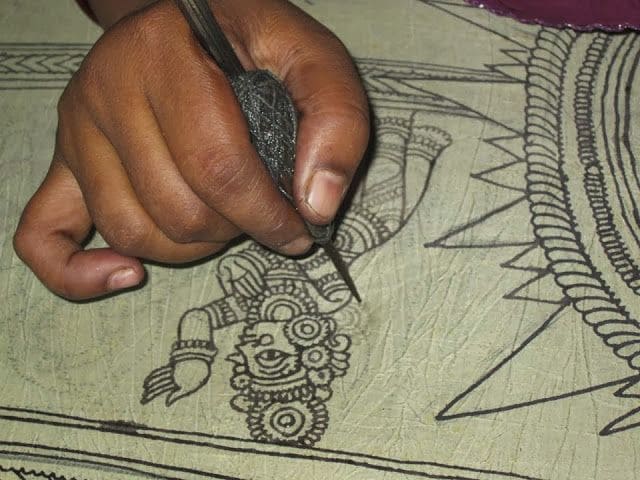
Another technique used in creating Kalamkari prints is hand-painting. Highly skilled artists use a pen-like brush called a kalam to meticulously draw the designs freehand. They use natural dyes made from plant extracts, minerals, and other organic materials to bring the patterns to life. This method allows for greater flexibility and artistic expression, as artists can create intricate details and shading with their brushes.
3. Types of Kalamkari Prints
3.1 Srikalahasti Style
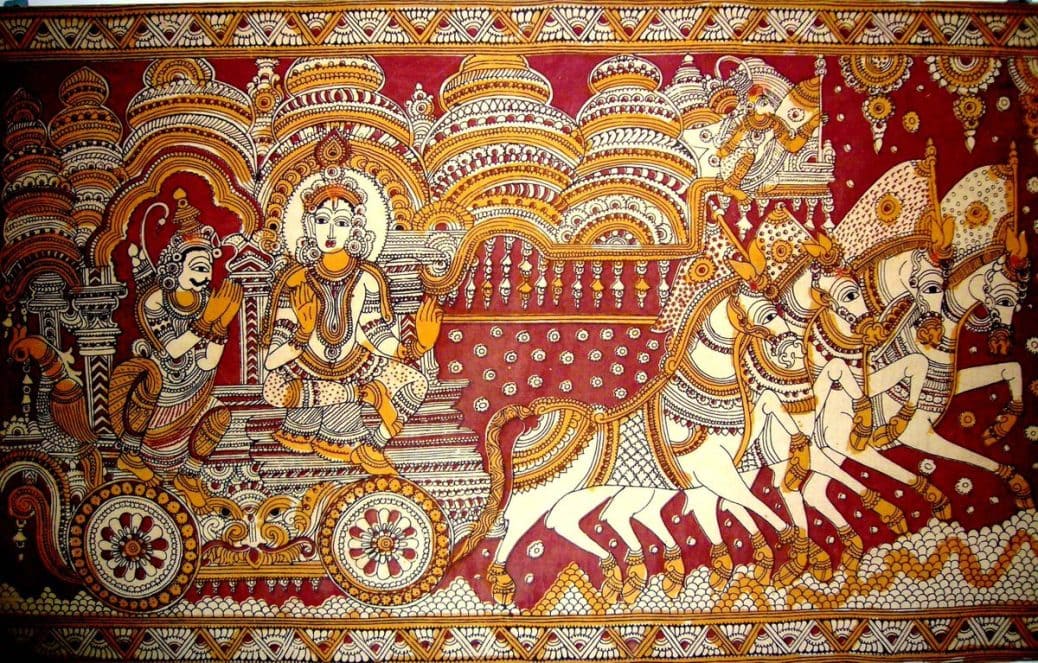
The Srikalahasti style of Kalamkari prints originates from the town of Srikalahasti in Andhra Pradesh. Intricate pen work that frequently depicts legendary tales and characters from Hindu epics like the Ramayana and Mahabharata defines this style. The Srikalahasti Kalamkari prints are known for their vibrant colors, fine lines, and exquisite detailing.
3.2 Machilipatnam Style
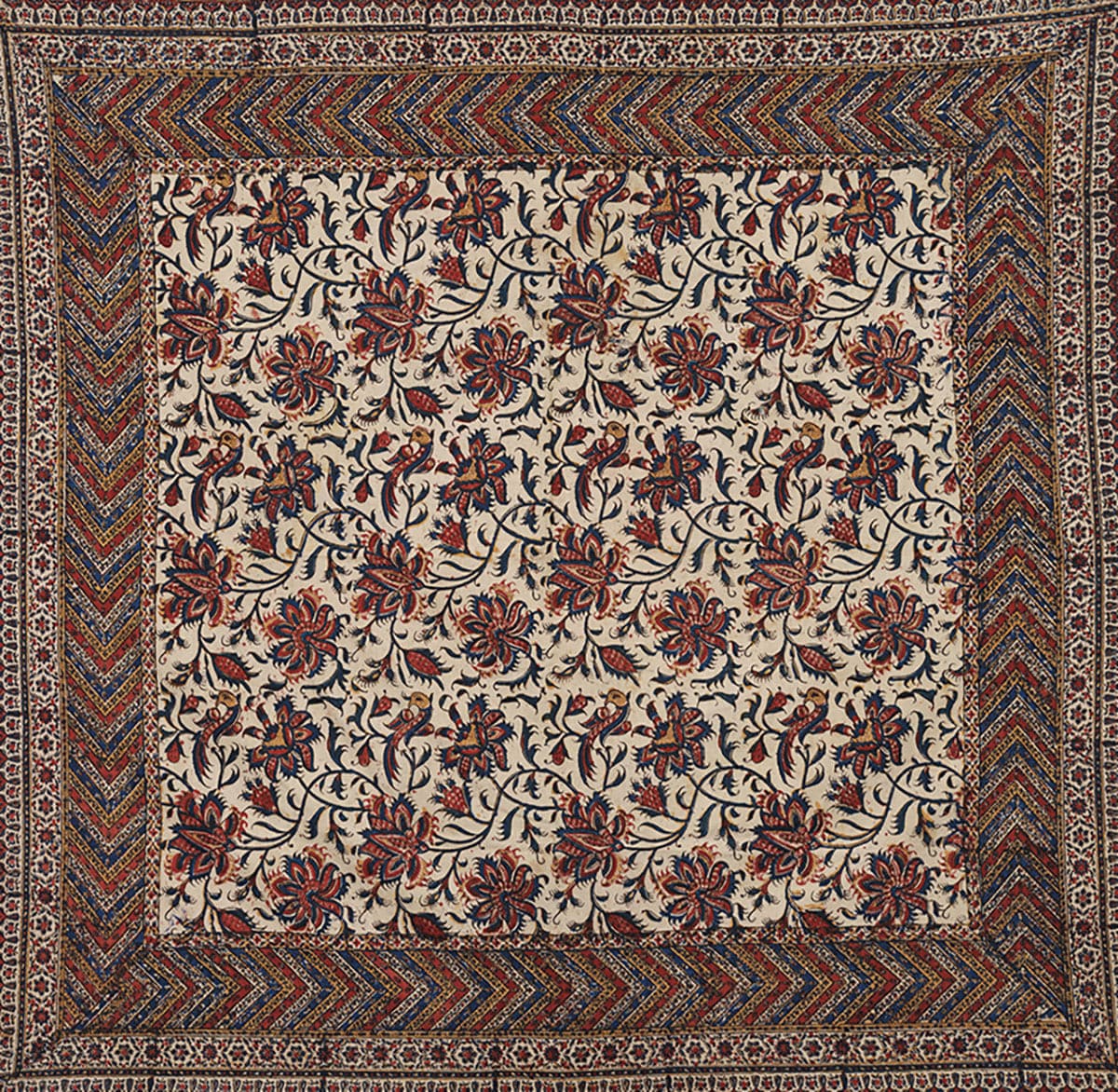
The Machilipatnam style of Kalamkari prints hails from the town of Machilipatnam in Andhra Pradesh. This style features a combination of block printing and hand-painting techniques. The designs in the Machilipatnam Kalamkari prints are typically inspired by nature, with motifs such as flowers, birds, and vines. The color palette used in this style is often more subdued, showcasing earthy tones and natural dyes.
4. Kalamkari Print Fabrics: Aesthetic and Cultural Significance
4.1 Intricate Designs and Motifs
Kalamkari prints are revered for their intricate designs and motifs. The patterns often depict scenes from mythology, nature, and everyday life, telling stories and conveying cultural symbolism. From majestic peacocks to blooming lotuses, each element in Kalamkari prints holds deep meaning and reflects the rich cultural heritage of India.
4.2 Symbolism and Stories
Every motif in Kalamkari prints has a story to tell. For example, the tree of life symbolizes fertility and abundance, while the lotus represents purity and enlightenment. These symbolic elements add depth and significance to the prints, making them more than just visually appealing patterns.
5. Contemporary Applications of Kalamkari Prints
5.1 Fashion and Apparel

Kalamkari prints have found their way into the world of fashion and apparel. Designers are incorporating these prints into sarees, dresses, blouses, and scarves, creating stunning ensembles that fuse tradition with modern aesthetics. The versatility of Kalamkari prints allows them to be adapted into various garment styles, making them a popular choice among fashion enthusiasts.
5.2 Home Décor
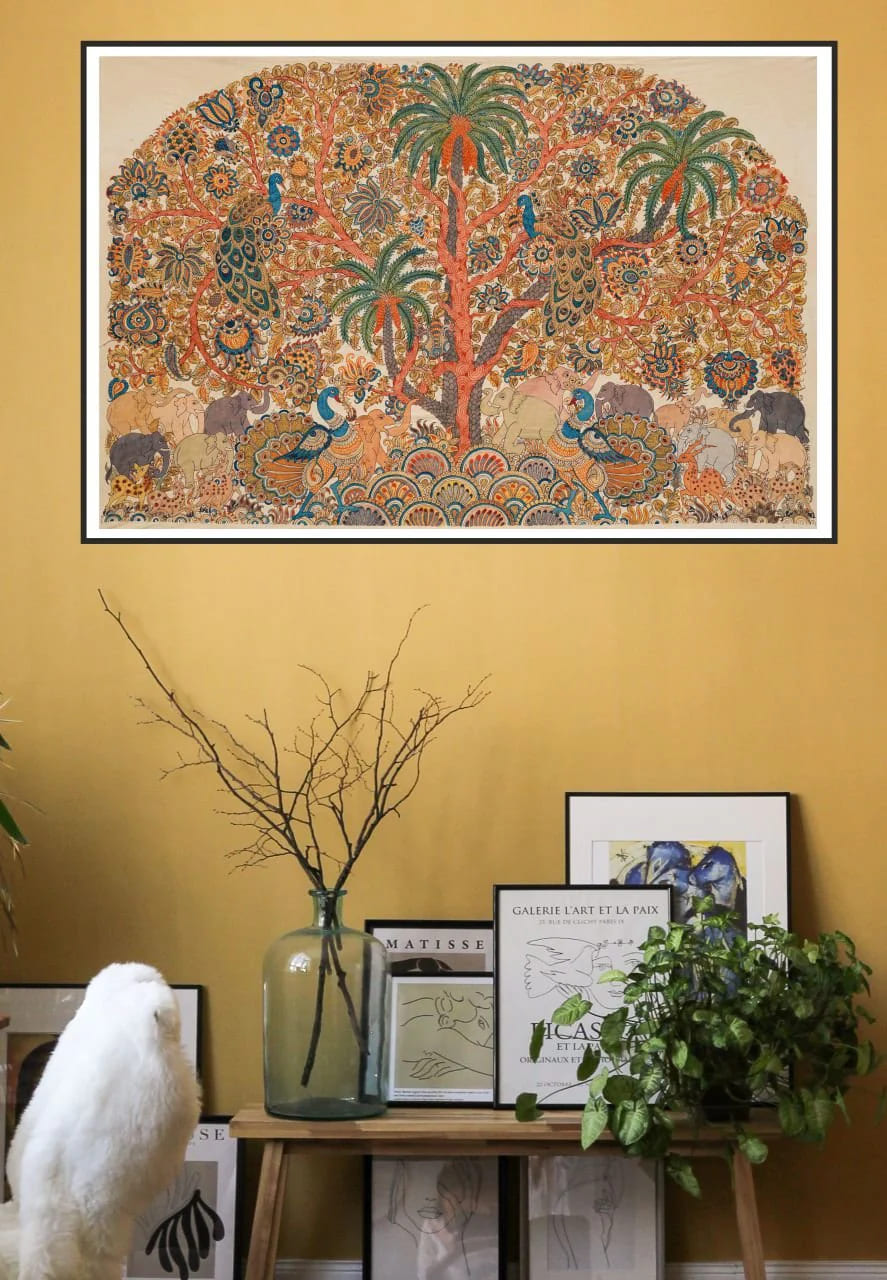
Kalamkari prints have also made a mark in the realm of home décor. From bedspreads and curtains to cushion covers and tablecloths, these prints add a touch of elegance and cultural charm to living spaces. The intricate patterns and vibrant colors of Kalamkari prints bring warmth and character to any room, making them a preferred choice for interior design.
5.3 Art and Collectibles
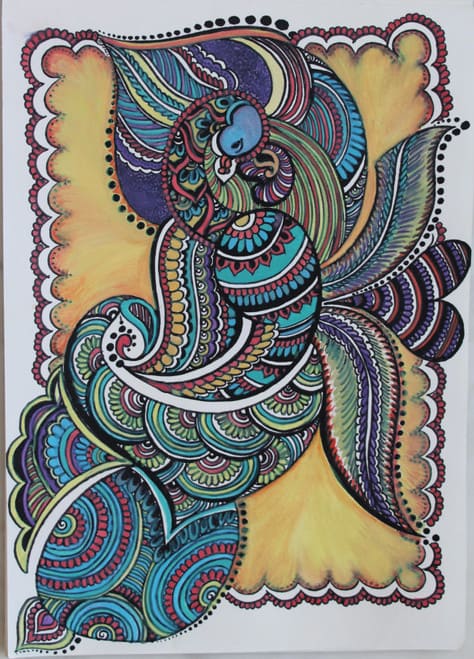
Kalamkari prints are not just limited to fabrics. They have also gained recognition as collectible art pieces. Collectors and art aficionados are interested in purchasing intricately hand-painted Kalamkari panels and scrolls. These exquisite artworks, often framed and displayed as wall hangings, showcase the mastery of the Kalamkari artists and serve as a testament to the enduring beauty of this ancient craft.
6. Caring for Kalamkari Print Fabrics
To ensure the longevity of Kalamkari print fabrics, proper care is essential. Here are some tips to keep them looking vibrant and beautiful:
- Hand wash: It is recommended to gently hand wash Kalamkari print fabrics using mild detergent. As harsh chemicals like bleach can fade colours and harm fabrics, avoid using them.
- Cold water: To avoid colour bleed during washing, use cold water. Hot water can cause the dyes to run and lead to color fading.
- Gentle drying: After washing, air-dry the fabrics in a shaded area. The colours may gradually deteriorate under direct sunshine.
- Ironing precautions: Use a low heat setting and a thin cloth between the iron and the fabric if ironing is necessary to protect the print.
You can keep your Kalamkari print fabrics looking beautiful and intact for many years according to these maintenance suggestions.
In conclusion, Kalamkari prints unveil the rich tapestry of Indian craftsmanship, enchanting art enthusiasts and fashion lovers alike. With their intricate designs, vibrant colors, and cultural significance, these prints represent the timeless beauty of Indian textiles. Whether adorning traditional attire, enhancing home decor, or collected as exquisite art pieces, Kalamkari prints bridge the gap between tradition and modernity.
If you're looking to explore the world of Kalamkari prints and experience their finest quality, FabCouture offers a wide range of Kalamkari fabrics. Their collection showcases the artistry and skill of Kalamkari artisans, providing you with the opportunity to embrace the beauty of this ancient craft. Explore FabCouture's store today to discover the best selection of Kalamkari fabrics at competitive prices.
FAQs
- Are Kalamkari prints only used in traditional Indian clothing?
No, Kalamkari prints have transcended traditional boundaries and are now used in various contemporary fashion and home décor items
.
- Can Kalamkari prints be machine-washed?
It is best to hand wash Kalamkari prints to ensure their longevity. Machine-washing may cause the colors to fade or bleed.
- Are Kalamkari prints eco-friendly?
Yes, Kalamkari prints often use natural dyes made from plant extracts, which makes them an eco-friendly choice compared
Leave a Comment
Blogs
Popular Posts
Newletter
Thanks for subscribe.

Fabcouture is an online fabric store to satisfy all your couture fabrics cravings for fabric connoisseurs. We delight in the fact that we source...
0 Comment